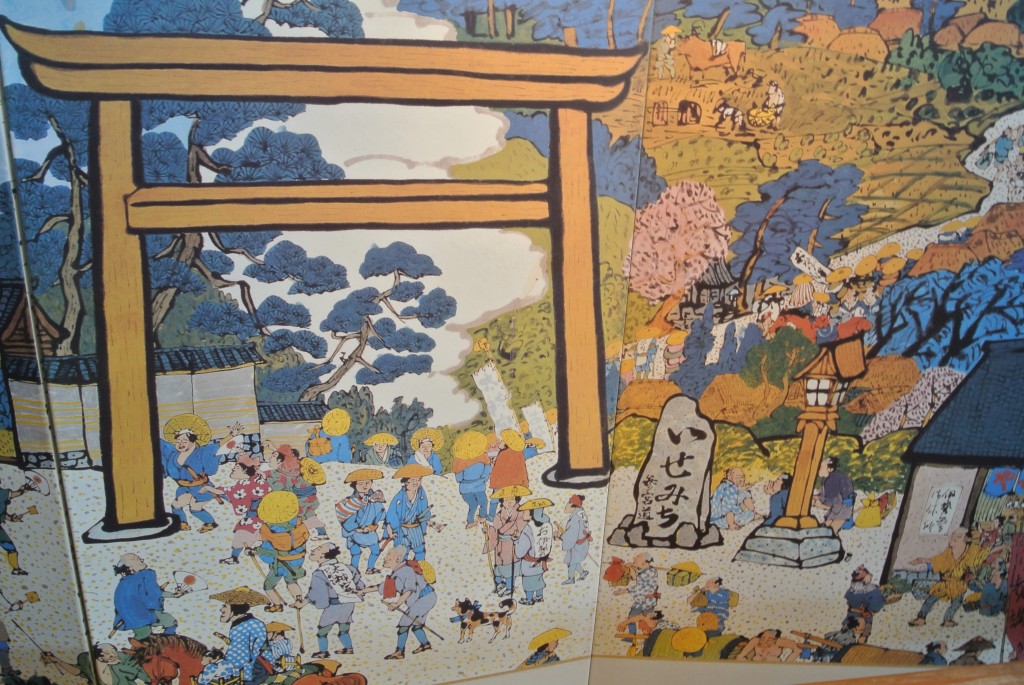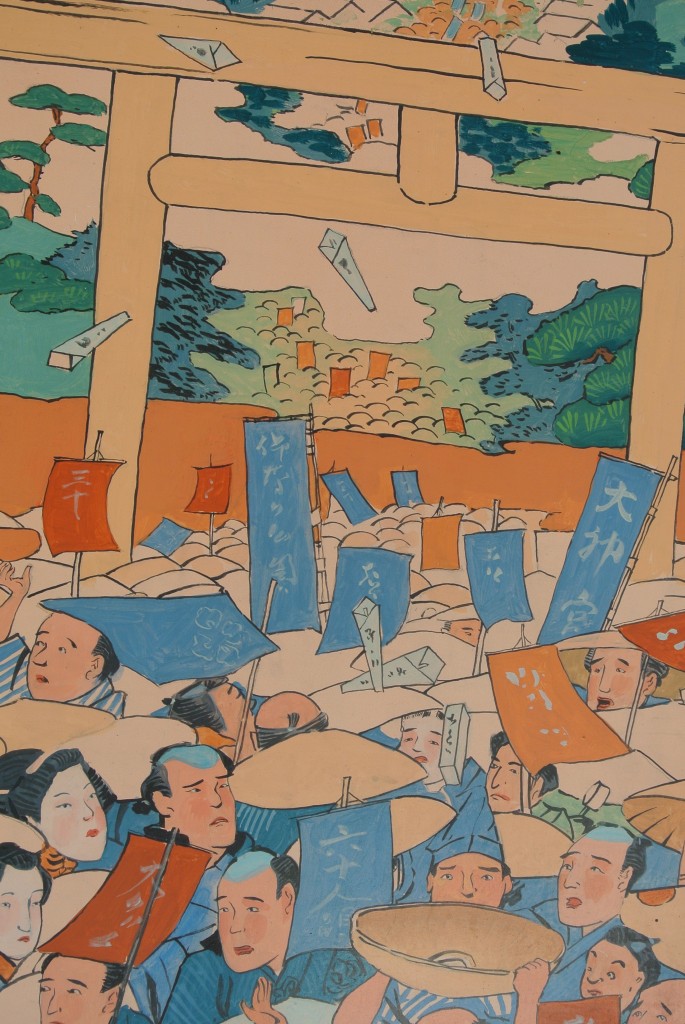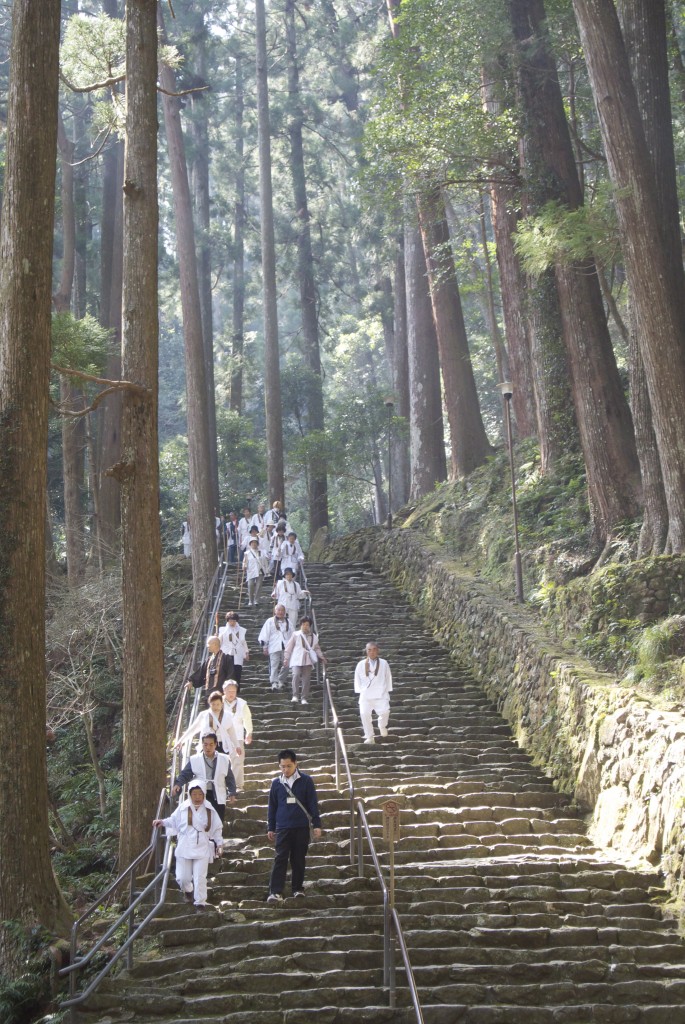
Ise pilgrimage in Edo times – the rich got to ride horses, others paid to have their belongings carried, while those incapable of making the pilgrimage sent dogs in their stead
In the Japan Times this week Green Shinto friend, Amy Chavez, has been writing about the Kumano pilgrimage route. It centres around the three great Shinto shrines known as the Kumano Sanzan. The network of trails is deeply syncretic, embracing several Buddhist sites too including the well-known Koyasan headquarters of the Shingon sect.
It’s said that pilgrimage is the largest collective human enterprise on earth, in which some 300 million people worldwide are engaged each year. Christians do it; Muslims do it; Hindus do it (and even birds do it, if you include migration as a form of pilgrimage!). A quarter of a million people go on the Santiago de Compostela pilgrimage each year, while 2-3 million do the Haj to Mecca (one of the five pillars of Islam). But even these numbers are dwarfed by those who undertook the Ise pilgrimage in Edo times, when religion was one of the few valid reasons for travel.

Pilgrimage to Ise in Edo times meant being part of a jostling throng headed for the Outer Shrine (Geku) and the nearby worldly pleasures
The appeal of pilgrimage in modern times goes along with the increasing tendency for people to seek spiritual fulfilment outside the confining rules of religion. The reluctance to join a religion stems from the barriers it creates with an ‘us and them’ mentality. On the other hand, people can take up pilgrimage any time they want without any commitment to a religion. They are free to come and go at their own pace. The destination provides a goal, and there is a tremendous sense of achievement in accomplishing it. When done properly, it can be transformative.
In setting out the pilgrim is embarking on a journey that takes them out of the mundane world of everyday cares and away from their comfort zones. It’s a journey that can make people confront themselves and look inward even as they look outward to the new surroundings. From anticipation and excitement, the pilgrim is led to introspection and self-examination. Physical pain and fatigue are accompanied by downbeat moments of despondency. Like any spiritual journey, the dark moments must be passed through in order to see the radiance at the end of the tunnel.
Modern pilgrimage in Japan often involves transport such as coaches, which could be seen as a symptom of the softness of contemporary life. But walking is an integral part of the process of pilgrimage. It forces the individual to slow down to a meditative pace, and the mind learns to get in step with the regular beat of foot against earth. It’s not by chance that writers and artists often get their best ideas when walking.
Along the way there are chance encounters, and every pilgrim’s story includes serendipitous meetings and chance remarks that prove enlightening. There are life-changing conversations with complete strangers, eager to recount the meaningful experiences they’ve undergone. And there’s a sense of camaraderie in the shared suffering.
Done properly then, the pilgrimage can marry the best of collective experience with the quest for individual enrichment. Shinto pilgrimages in particular often involve journeys into mountains, where the human spirit is refreshed by immersion in raw nature. On returning to reality, everything may seem outwardly the same but the inner self has been purified. The end is but a beginning…

Pilgrims on the Kumano Kodo (Old Pathways), near Nachi Waterfall.

Thanks for the mention. This is an excellent summary of the way pilgrimage affects a transformation inside us via subtle nudging that propels us to continue forward towards enlightenment. We come away from the journey a different person.